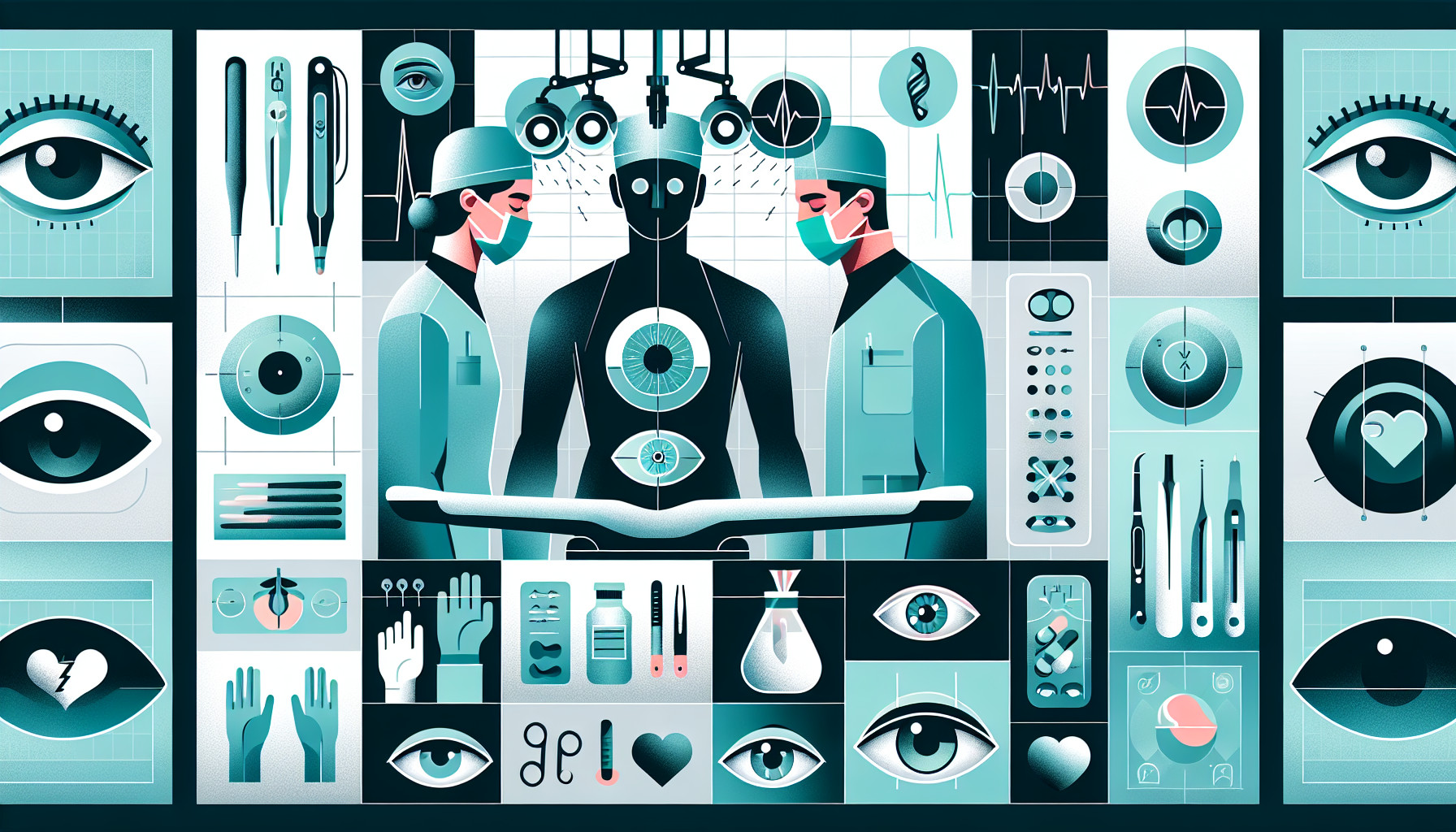Our Summary
Corneal blindness impacts over 5 million people, and every year, more than 180,000 corneal transplant operations are carried out. However, in high-risk transplants, almost all of the donated corneas are rejected within a decade. This study examines a gene therapy treatment that may help to prevent this rejection.
The researchers had previously found that a protein called HLA-G can help to suppress the immune response in the eye, which can stop the body from rejecting a new cornea. However, HLA-G needs to pair up with another HLA-G protein to work effectively, and this process can sometimes be slow.
To speed up this process, the researchers engineered a new protein, called single-chain immunomodulator (scIM), which can mimic the activity of the paired HLA-G proteins without needing to pair up with another protein. They delivered this protein to the cornea using a harmless virus.
The researchers tested this treatment in mice and rabbits. In a mouse model of corneal injury, the treatment reduced the growth of new blood vessels in the cornea and the build-up of scar tissue. In a rabbit model of high-risk corneal transplant, all of the corneas treated with the gene therapy were still clear and healthy after 42 days, whereas 83% of the untreated corneas had been rejected.
Overall, this study suggests that this gene therapy treatment can reduce the risk of rejection in high-risk corneal transplants, potentially offering a new way to treat corneal blindness.
FAQs
- What is the potential solution to prevent high-risk corneal transplant rejection according to the study?
- How does the single-chain immunomodulator (scIM) work in preventing corneal transplant rejection?
- What were the results of the study when using ex vivo AAV8-scIM gene delivery in a high-risk corneal transplant rejection rabbit model?
Doctor’s Tip
A helpful tip a doctor might tell a patient about corneal transplant is to follow all post-operative care instructions, including taking prescribed medications as directed, attending follow-up appointments, and avoiding rubbing or putting pressure on the eye. It is important to protect the eye from injury and infection to ensure the success of the transplant.
Suitable For
Patients who are typically recommended for corneal transplant include those with corneal scarring, corneal thinning, corneal ulcers, keratoconus, corneal dystrophies, corneal degeneration, and corneal infections that have not responded to other treatments. Additionally, patients who have experienced corneal trauma or injury may also be candidates for corneal transplant. In high-risk cases where there is a history of corneal transplant rejection, ex vivo gene therapy with AAV may be recommended to establish immune tolerance in the corneal allograft and prevent rejection.
Timeline
Before the corneal transplant:
- Patient is diagnosed with corneal blindness or a condition that requires a corneal transplant.
- Patient undergoes pre-operative evaluations and tests to determine suitability for the transplant.
- Patient is placed on a waiting list for a donor cornea.
- Once a donor cornea becomes available, the surgery is scheduled.
After the corneal transplant:
- Patient undergoes the corneal transplant surgery, where the damaged or diseased cornea is replaced with the donor cornea.
- Patient is monitored closely in the immediate post-operative period for any signs of complications or rejection.
- Patient is prescribed a regimen of eye drops and medications to prevent infection and rejection.
- Patient attends follow-up appointments with the surgeon to monitor the healing process and check for any signs of rejection.
- Over time, the patient’s vision improves as the transplanted cornea integrates with the eye and heals.
- Patient may require adjustments to their medications or additional treatments if rejection occurs.
- Patient may eventually achieve restored vision and improved quality of life as a result of the successful corneal transplant.
What to Ask Your Doctor
- How does the AAV gene therapy work to establish immune tolerance in the corneal allograft?
- What are the potential benefits of receiving AAV8-scIM gene therapy for preventing high-risk corneal transplant rejection?
- What are the potential risks or side effects associated with AAV8-scIM gene therapy for corneal transplantation?
- How long does the effect of the AAV8-scIM gene therapy last in preventing corneal transplant rejection?
- Are there any specific criteria or considerations for patients who may be eligible to receive AAV8-scIM gene therapy for corneal transplantation?
- How does the AAV8-scIM gene therapy compare to other treatment options for preventing corneal transplant rejection?
- What is the success rate of AAV8-scIM gene therapy in preventing corneal transplant rejection in clinical trials or studies?
- Are there any ongoing research or developments in the field of gene therapy for corneal transplantation that patients should be aware of?
- How can patients stay informed and involved in their treatment plan when considering AAV8-scIM gene therapy for corneal transplantation?
- Are there any additional resources or support available for patients considering AAV8-scIM gene therapy for corneal transplantation?
Reference
Authors: Gilger BC, Hasegawa T, Sutton RB, Bower JJ, Li C, Hirsch ML. Journal: Mol Ther. 2024 Nov 6;32(11):4006-4020. doi: 10.1016/j.ymthe.2024.09.007. Epub 2024 Sep 7. PMID: 39245940
